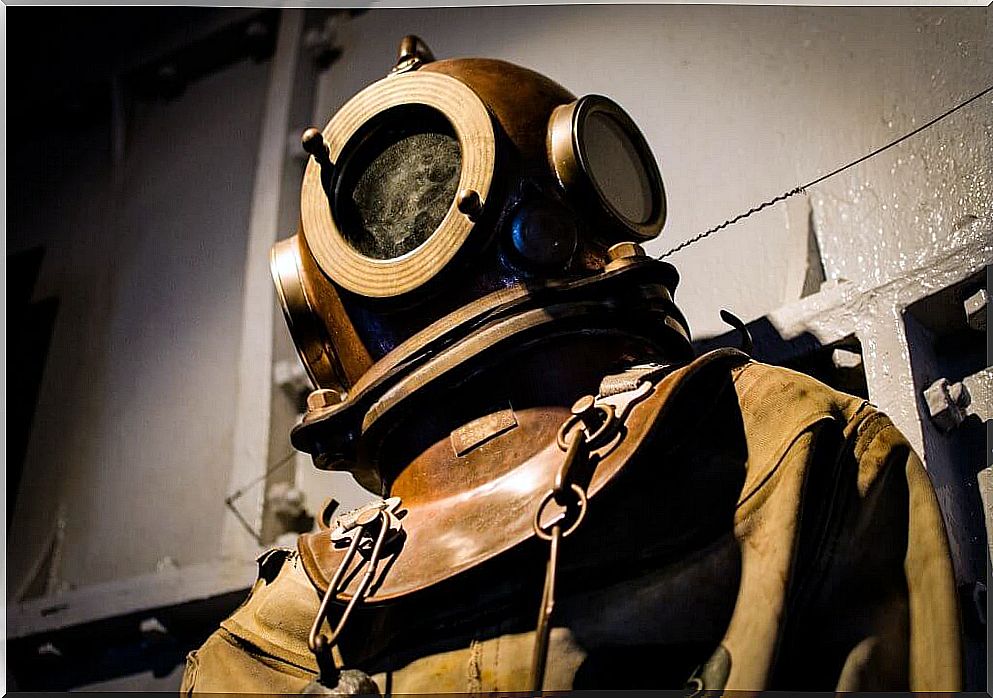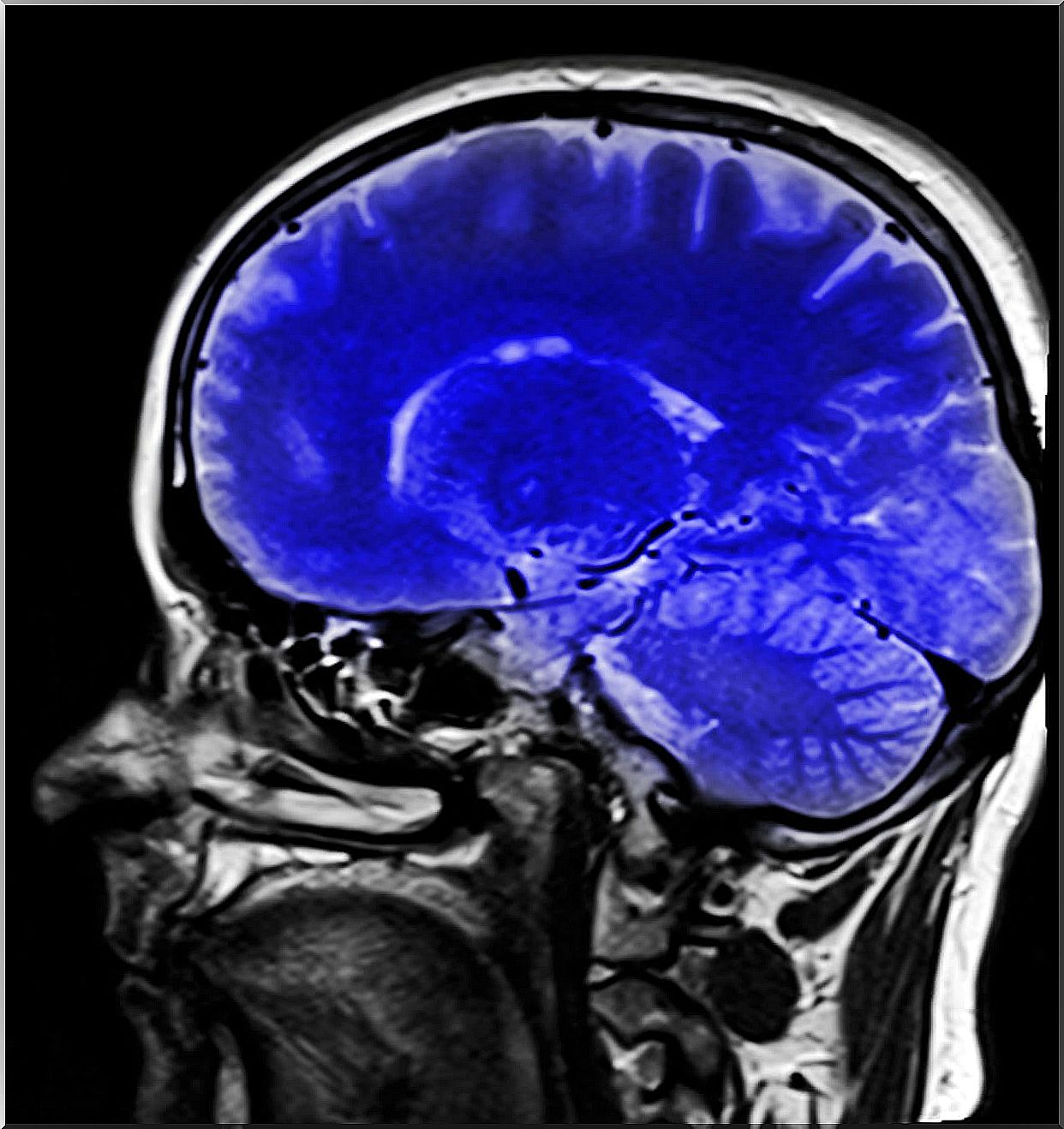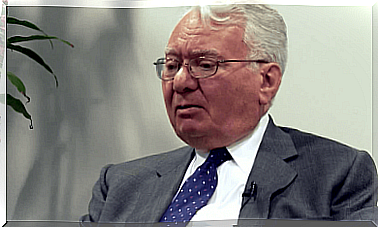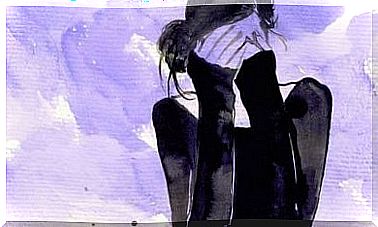Captivity Syndrome: Living Trapped In One’s Own Body

Captive or locked-in syndrome is a rare condition caused by a bilateral pontine lesion. The repercussion of the bridge injury is very serious and makes the person unable to move their body, except for the eyes and eyelids. Despite the loss of mobility almost completely, consciousness and the somatosensory system remain intact.
It is as if the brain “disconnected” from the body and lost the ability to command it. On the contrary, the brain continues to receive all the sensory signals such as pain and temperature and also somatic signals, such as hunger. Communication becomes almost impossible due to the inability to move the orophonatory muscles and this is relegated to the use of the movement of the eyelids.
There are cases in which communication has been achieved through the use of blinking. With a board in which the letters of the alphabet appear, the person chooses the letters of the words and phrases that he wants to form. It is a slow method but one that has been able to give a “voice” to those who lose it as a result of this syndrome.
Symptoms, causes and prognosis
The symptomatic picture of this pathology is: tetraplegia, anarthria (inability to articulate the word) and conservation of consciousness. As neither the cerebral cortex nor the thalamus is affected, cognitive functions are not affected. The subject perceives, processes and produces information through the use of cognitive processes normally. It is able to perceive all external stimuli, but not to respond physically to them.

The main cause is basilar thrombosis, in which there may be premonitory symptoms for weeks and even months before, such as vertigo and nausea. The non-vascular cause is head trauma, with contusion of the brain stem or vertobrobasilar dissection. According to the severity of the motor impairment, three clinical pictures can be distinguished:
- Classic : it presents with tetraplegia and anarthria with preservation of consciousness and ocular motility or blinking.
- Incomplete : similar to the classic one, but with some movement other than the eye.
- Total : without the preservation of any movement, it is usually accompanied by lesions in the midbrain.
Depending on the evolution, it can be transitory or chronic. Although in the cases in which there has been a disconnection of the descending tracks coming from the bridge, recovery is not possible. The disconnection of the descending pathways means that the orders sent to the rest of the body do not reach and consequently, it cannot respond to any stimulus, although it does receive them.
Means to detect captivity syndrome
It is logical to think about the present difficulty when detecting the captivity syndrome and differentiate it from others such as coma. Although at first it is not easy to know if the mental faculties of the patient are intact, since he cannot communicate.
There are neurological tests that help the diagnosis. The MRI scan can show the type of brain injury that can point to the syndrome.
Both positron emission tomography (PET) and electroencephalogram (EEG) can report brain activity. Through PET it can be seen if brain metabolism is normal, if that is the case, it would mean that brain functions would be preserved and there is awareness as in the aforementioned syndrome.
Through the EEG, the activity of brain waves can be monitored. By placing electrodes on the head, this tool makes it possible to determine the waves that predominate at the moment. In the case of a person suffering from the captivity syndrome, a reactive posterior alpha rhythm would be found.
The butterfly and the diving suit
Jean-Dominique Bauby was a French journalist who suffered a stroke at age 43. After spending about 20 days in a coma, Bauby woke up suffering from captivity syndrome, he was only able to move his left eye and head slightly. He suffered a great physical deterioration losing about 27 kilos of weight in a few weeks.

The worsening of the health derived from the suffered embolism caused him to live with the disease for about a year. During the year that he lived “locked in his body” he learned a method to communicate, with a table with the alphabet and by blinking. With the help of speech therapists and his family he wrote an autobiographical book “The Butterfly and the Diving Bell” which was a bestseller.
There is also a film based on his book with the same name, in which you can see the challenge for Jean-Dominique to face this severe disease and the thoughts that go around his head that his body is not capable of expressing. He uses his imagination and “travels” through his mind to different places that make him escape from a difficult reality to face.









